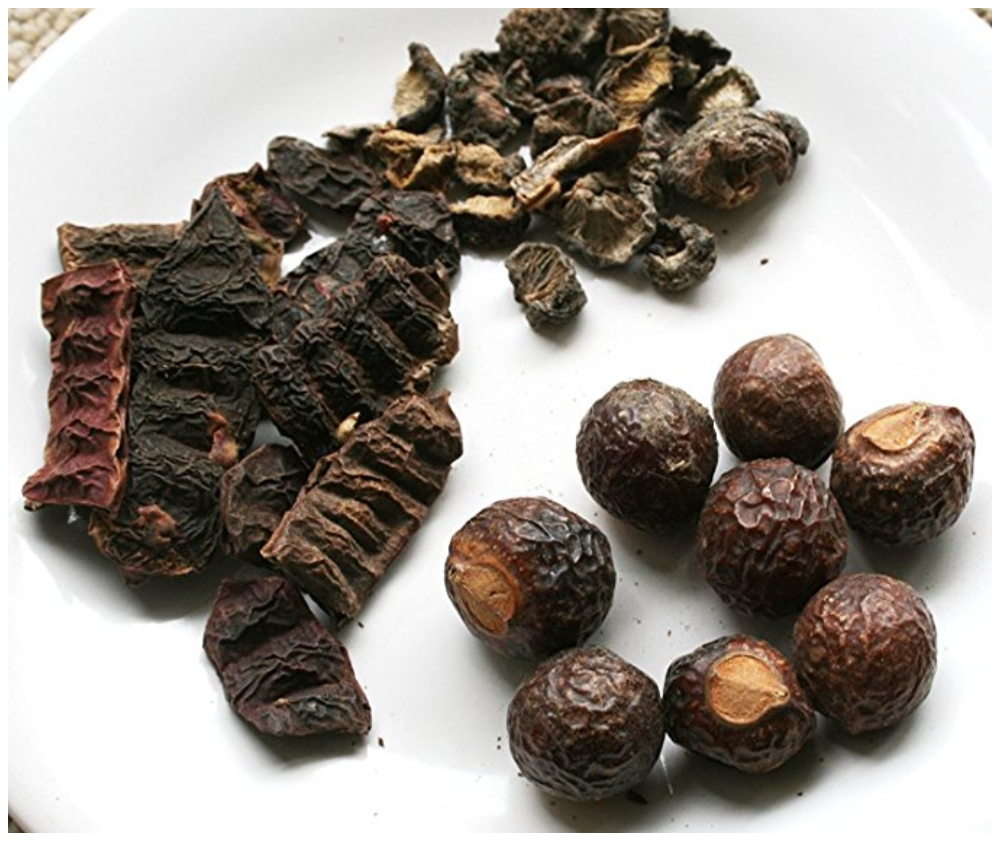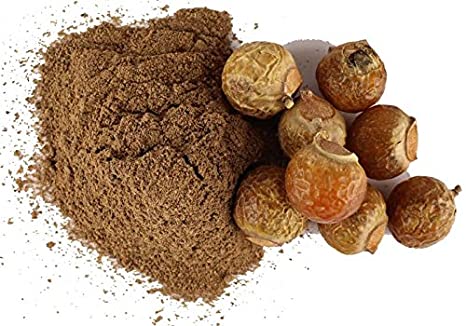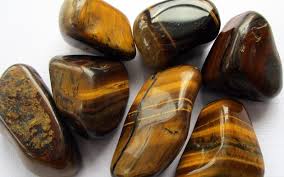Sanatan Sanstha provides guidance on how to survive during the adverse times !
To read Part 6, click here Preparation required to survive during the adverse times Part 6
Paratpar Guru (Dr.) Jayant Athavale, the only
visionary active for the survival of humans in the adverse times !

In the articles in this series published so far we have seen about the information on day-to-day requirements of a family. In this article information is given about the alternatives to the objects of day-to-day use.
3. Physical preparations for facing the coming adverse times
3 F. Planning about the alternatives to items of day-to-day use
During adverse times there will be shortage of many items of day-to-day use. Short-supply may result in them becoming expensive or may become extinct. Under such circumstance, the alternatives mentioned ahead will be useful. Practice as many as possible from now on.
3 F 1. Alternatives to the toothpowders and toothpastes available in the market

A. ‘Cut tender twigs of the neem tree into about 15 cm long pieces and use them for brushing teeth.
B. Brush teeth with table salt.’
– Mr. Avinash Jadhav, Sanatan Ashram, Ramnathi, Goa. (21.5.2020)
C. ‘A mixture of ten parts geru (Ochre, a natural red clay) and one part salt (Best if rock salt [black salt] is available, else, fine powder of table salt can be used.) can be used as toothpowder.
D. Burn dry leaves and twigs of as many trees as possible from among mango, guava, neem, Rui (Mandar,Calotropis gigantean), Pimpal (Ficus religiosa), Khair (Acacia catechu), Karanj (Millettia pinnata), and Arjun (Terminalia arjun). Filter the ash formed through a fine cloth and use as a toothpowder.’
– H.H. Vaidya Vinay Bhave, Sanatan Ashram, Ramnathi, Goa. (10.12.2019)
E. ‘Burn dry pods of Babhul (Vachellia nilotica), filter the ash through a fine cloth and use it as a toothpowder.
F. Toothpowder made from cow dung

Mix fresh neem leaves and rice husks with cow dung and make thin cow dung cakes. It prevents flies sitting on them and causing infestation. Neem leaves repel flies. Rice husks help the cow dung cakes burn faster. Thin cow dung cakes dry fast. Make a small pile of cow dung cakes prepared thus. Make the pile keeping enough gap to light a lamp. Keep a lit ghee lamp in the gap. As soon as some cow dung cakes catch fire, withdraw the lamp. When the entire pile is completely burnt, but the fire is smouldering, place a large pot or container over it so that the smouldering pile is completely covered. Seal the edges of the pot with soil. (At some places, cow dung cakes are burnt in a small pit. When fully burnt and smouldering, the pit is covered with a metal sheet. The edges of the sheet are sealed with soil.) As a result, the fire smouldering under the pot gets smothered and extinguishes. The next day, collect the ash under pot, and sift it using a fine cloth.
If the powder of cow dung ash is ten small bowls, add five teaspoons of rock salt and half a teaspoon of alum powder and mix well. Use this mixture as a toothpowder.’
– Mr. Avinash Jadhav (21.5.2020)
G. ‘Make a pile of rice husks and place embers on it. Rice husks will soon catch fire. When this pile is completely burnt, it transforms into ash. Upon cooling sift the ash through a fine cloth. (Part of the outer portion of this pile becomes black due to burning, but does not turn into ash. Separate this black portion and collected carefully the good ash.) Use it as toothpowder.’
– H.H. Vaidya.Vinay Bhave (10.12.2019)
H. ‘Burn coconut shells or almond shells and grind the charcoal formed to fine powder. Sift this powder through a fine cloth and use as toothpowder.’
– Mr. Avinash Jadhav (21.5.2020)
All the toothpowders mentioned above from sub-point C can last about a year if kept in an airtight plastic bag or small container.
3 F 2. Alternatives to shaving foam and shaving cream
A. ‘Shaving can be done by applying warm water to cheeks or immediately after taking a hot bath.
B. The beard can be shaved after applying coconut oil or sesame oil
When the above mentioned options are used shaving is moderate (not smooth). Do not be use them if you experience trouble while shaving.’
– H.H. Vaidya Vinay Bhave (10.12.2019)
3 F 3. Alternatives to body soap

‘If bathing soap is not available, use the flour of chickpea pulses or lentil pulses, multani soil, soil from an anthill or any clean soil sifted in a good place (For example, black soil, red soil). These items should be soaked in a little water first and then used like ubtan (A fragrant herbal powder). [Sometimes there is a presence of Vastudevata (Presiding Deity of premises) in the anthill. So by asking the people around and by making sure that ‘the anthill does not belong to the Vastudevata’, break the anthill with a long stick and gather the lumps of soil together. Then these lumps of soil should be ground and finely sifted through a fine sieve. ]
If any of the above items are not available, it is ok if you simply rub your body with your hand while taking a bath.’
– Vaidya Megharaj Paradkar, Sanatan Ashram, Ramnathi, Goa. (13.3.2019)
1 F 4. Alternatives to soaps to wash hair and shampoos available in the market
1 F 4 A. Making Shikakai (Acacia concinna) powder at home

‘Take two parts of amla powder and one part of Shikakai and Ritha powder each and mix well. Soak 2 to 4 teaspoons of this powder in an iron pot overnight. (If there is no iron pot, put this mixture in a stainless steel pot and add iron pieces, for example, 4 – 5 iron nails, to it. The nails should be removed the next day before using this mixture. – Compiler) Black colour is generated due to the combination of amla and iron. This helps the hair to turn black. Apply the paste of the soaked powder on hair one hour before bathing in the morning and wash hair with lukewarm water while bathing. Doing this once or twice a week keeps the hair healthy and they become black and soft.’
– Vaidya (Mrs.) Gayatri Sandesh Chavan, Kurla, Mumbai, (20.6.2020)
‘In the above mentioned powder two parts fenugreek, one part nagarmotha (Cyperus rotundus), one part jatamansi (Nardostachys or Spikenard) as well as dried Hibiscus flowers, Brahmi (Bacopa monnieri ) leaves and maka (Bhrungraj, Eclipta prostrata) leaves can be powdered and added as per availability. This powder can be stored in an airtight container for about a year. These items last for about 3 years without being powdered and dried in the sun and kept in an airtight container. If these items become soft due to the humidity in the air, they can be dried again in the sun.’
– Vaidya Megahraj Paradkar (20.6.2020)
3 F 4 B. Ritha (Soapnut, Sapindus mukorossi)
Ritha fruit should be dried and stored. Soak 5 – 6 ritha fruits in hot water overnight. In the morning, while bathing, wash hair with that water.
3 F 5. Alternative to laundry soap or laundry detergent
3 F 5 A. Ritha

‘Ritha fruit should be dried in the hot sun. Sometimes they burst when dried and the seeds in them come out automatically. If the seeds do not come out automatically, gently crush the dried ritha fruits in a mortar and remove the seeds. Pound the shells of ritha fruit in a mortar and then grind it finely with a mixer or a manual stone mill. When using this powder as soap, add just enough water to make it moist. Put the wet powder in a pot for 20 to 25 minutes. Then rub it on wet clothes like soap and use it for washing clothes.
3 F 5 B. Black soil
When washing clothes with this soil, apply it on wet clothes like soap and wash them in running water. (Red soil should not be used for washing clothes as it stains clothes.)’
– Mr. Avinash Jadhav (May 2020)
3 F 5 C. Ash made from stocks of banana leaves
‘Dry the stalks of banana leaves. Then burn them to ashes. Since salt is present in this ash, it can be rubbed on wet clothes like soap, to wash them.’
(Reference text : ‘Vyaparopayogi Vanaspativarnan [Part 1]’, author – Mr. Ganesh Ranganath Dighe, 1993)
3 F 6. Alternatives to dishwashing soap, dishwashing soap powder, etc.
3 F 6 A. Ash from chulha
‘The ash from a chulha can be used to wash utensils.
3 F 6 B. Soil
If ash is not available, wash the utensils with any soil (For example, black soil, red soil). If there are stones in the soil, the pots may get scratches; therefore, sieve the soil to wash the utensils.
3 F 7. Alternative to hand wash or liquid soap
3 F 7 A. Ash from the chulha
Wash hands with ashes from chulha.
3 F 7 B. Soil
Wash hands with any type of soil.’
– Mr. Avinash Jadhav (May 2020)
3 F 8. Alternative to a matchbox or lighter
3 F 8 A. Using a convex lens or magnifying glass to light a fire in sunlight

Convex lens can be used to light a fire when there is sunlight. This lens can be found in shops where laboratory appliances are sold. The sun’s rays, when centred through a convex lens on a piece of cotton, coconut husk, dry grass, dried leaves, or pieces of paper for about 1 to 5 minutes, ignites them.
3 F 8 B. Keeping the fire burning in the chulha
1.‘After cooking, sprinkle a little ash on the embers in the chulha. Consequently, the embers in the chulha keep smouldering. After 3 – 4 hours, put pieces of paper or dried leaves on the same smouldering embers and re-ignite the fire by blowing with a blow pipe.’
– Mr. Avinash Jadhav (May 2020)
2. ‘Make 2 chulhas. Dig a small pit in the ground below each chulha. Put a ball of fresh cow dung in the pit of one of the chulha. Put ash on it and light the fire in the chulha as usual. The soil absorbs the water from the cow dung ball and it begins to smoulder. Use the second earthen cooking stove the next day. Put the cow dung ball in the pit of the earthen cooking stove and use it all day long. On the third day, remove the cow dung ball from the first earthen cooking stove with the pair of tongs. The fire is still smouldering in that cow dung ball. Put paper or dry leaves on it and ignite the fire using a blow pipe. In this way both the chulhas should be used alternately.’
– Mr. Vivek Naphade, Sanatan Ashram, Devad, Panvel, Maharashtra. (May 2020)
3 F 8 C. Lighting a fire with the help of pebbles

‘Two lime sized pebbles should be rubbed against each other and make the sparks fall on the cotton. It causes the cotton to burn.’
– Mr. Kondiba Jadhav, Sanatan Ashram, Ramnathi, Goa. (7.1.2019)
3 F 9. Alternative to salt
‘The dried stalks of banana leaves contain salt. Many poor people in West Bengal use this ash instead of salt.’
– Reference text : ‘Vyaparopayogi Vanaspativarnan [Part 1]’, author – Mr. Ganesh Ranganath Dighe, 1993)
3 F 10. Alternative to plates and bowls

Use banana or wild banana leaves as a plate for meals. Also use plates and bowl made from the leaves of the Banyan tree.
3 F 11. Alternative to mosquito repellent incense sticks, liquid, etc. available in the market
3 F 11 A. Making a mosquito repellent stick at home
‘Take about one kg of fresh cow dung. Add to it about one handful of bay leaves, 2 handfuls of neem leaves, half handful of mint leaves, half handful of tulsi (Holy basil) leaves and grind them finely. Add two teaspoons of neem oil and half a spoon of camphor powder to the ground mixture and mix well. Shape the mixture by hand like Frankenstein sticks and dry them well. Light a stick as and when required. The smoke emitted helps repel mosquitoes.
3 F 11 B. Other alternatives
1. To repel mosquitoes in the room
A. Put a clove of garlic in the mosquito repellent machine that uses chemically treated paper mats and switch the machine ON. One clove of garlic can be used for 1 – 2 days.
B. Mix neem oil and coconut oil in equal proportions and light an oil lamp with it in the room.
C. Create smoke by putting neem leaves on embers. If the leaves are dried, moisten them a little and put them on the embers so that they do not burn quickly.
D. Put dried orange peels on the embers and create smoke.
2. Apply a mixture of neem leaf juice and mint oil in equal proportions to the exposed part of the body. This will repel mosquitoes.
3. Plant Marigold plants in the yard to reduce the number of mosquitoes.’
– Mr. Avinash Jadhav (16.6.2020)
To read Part 8, click here Preparation required to survive during the adverse times Part 8
Reference : Sanatan’s forthcoming Text series – ‘Preparations required to survive the adverse times’
(Copyright : Sanatan Bharatiya Sanskruti Sanstha)


 Terrace gardening a lifeline for calamitous times (Part 2)
Terrace gardening a lifeline for calamitous times (Part 2) Terrace gardening a lifeline for calamitous times (Part 1)
Terrace gardening a lifeline for calamitous times (Part 1) Activities to be undertaken daily to maintain God’s grace and to build a protective shield...
Activities to be undertaken daily to maintain God’s grace and to build a protective shield... how to improve mental strength to face a terrible situation such as a riot
how to improve mental strength to face a terrible situation such as a riot Preparation required to survive during the adverse times Part – 10
Preparation required to survive during the adverse times Part – 10 Preparation required to survive during the adverse times part – 9
Preparation required to survive during the adverse times part – 9